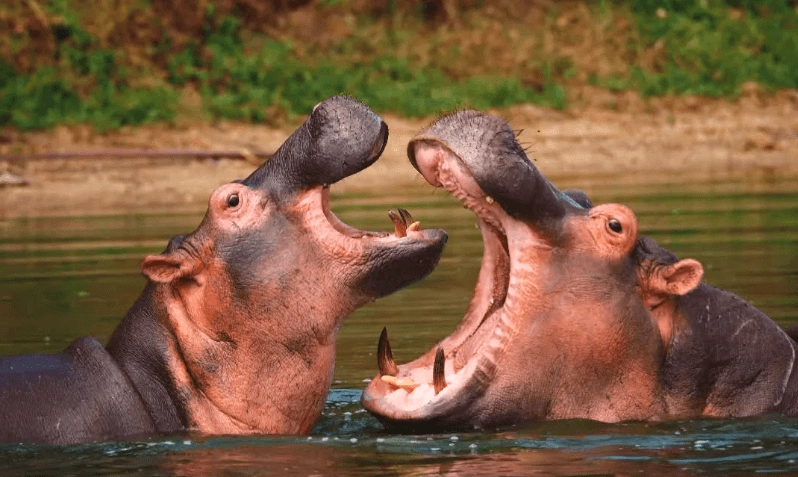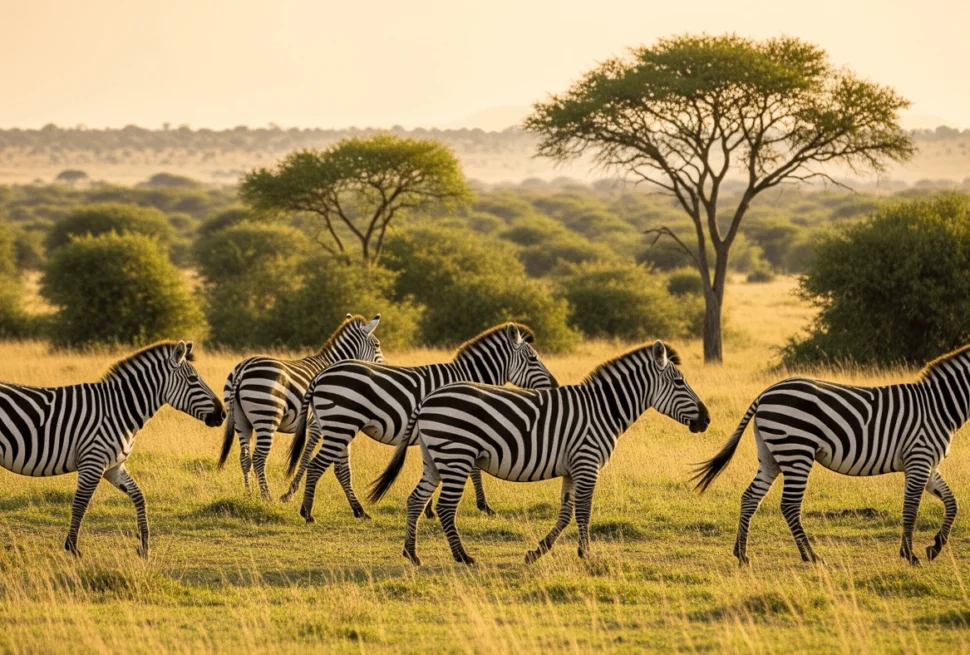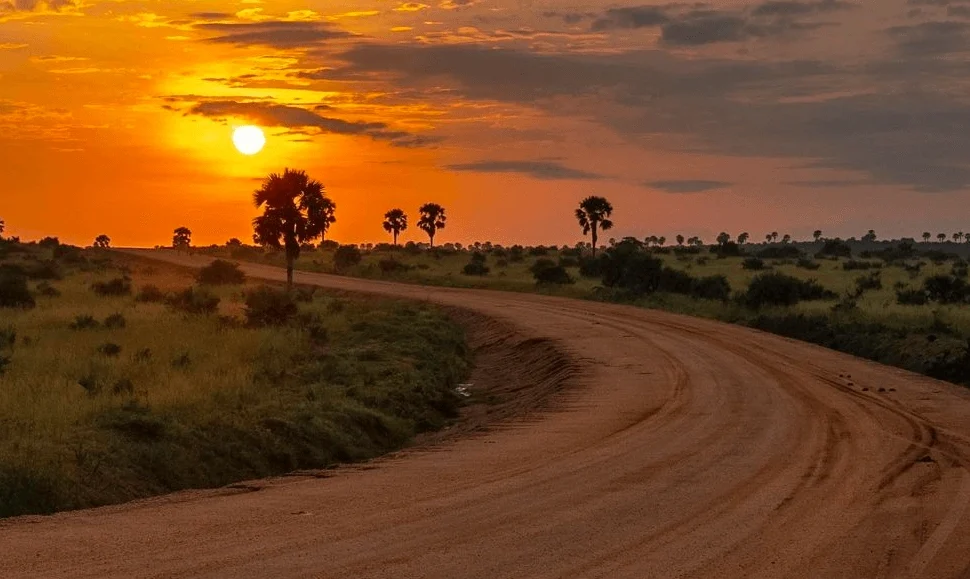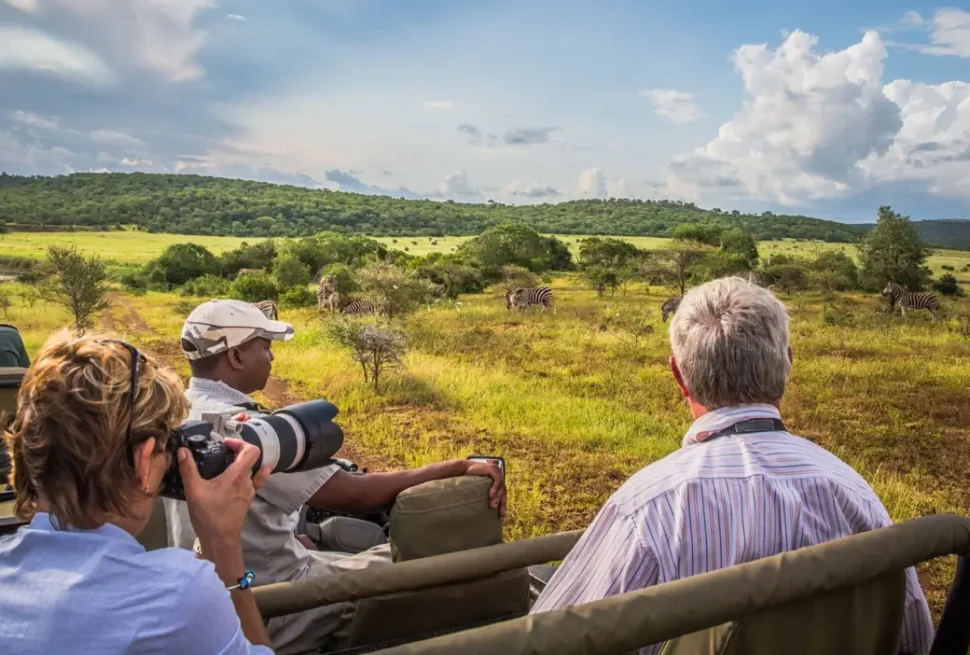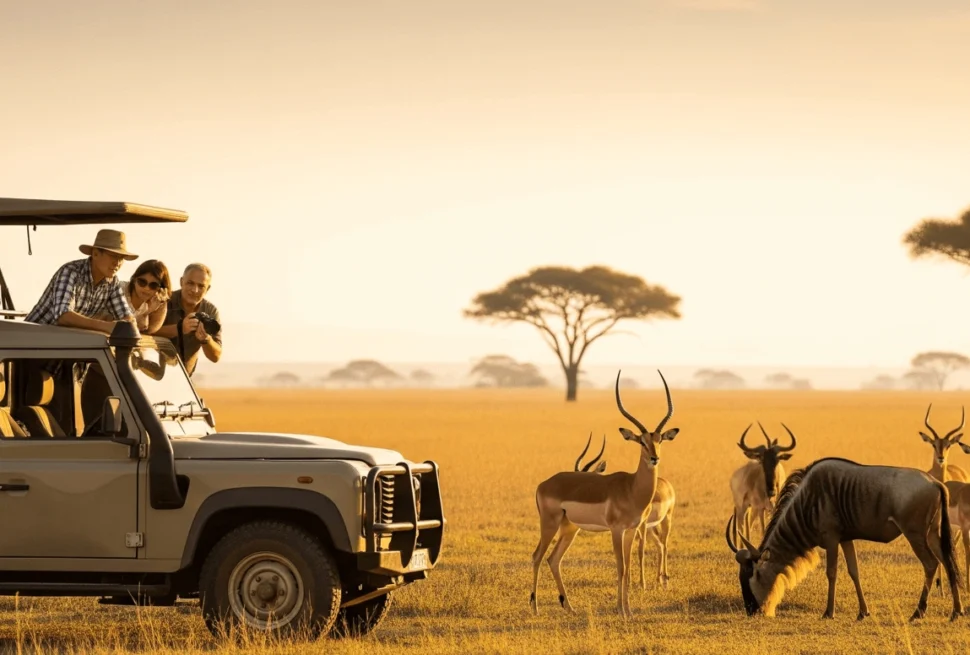A hippo’s day looks peaceful. Half-submerged, eyes and nostrils breaking the surface, they drift in slow circles across Uganda’s rivers and lakes.
Yet beneath that calm lies one of Africa’s most territorial animals, powerful, social, and endlessly fascinating to watch.
Key Takeaways
- Hippos are common in Uganda’s national parks, especially Murchison Falls and Queen Elizabeth.
- Early mornings and late afternoons offer the best viewing.
- Boat cruises provide close but safe encounters.
- Their presence reflects the health of Uganda’s river ecosystems.
- Responsible viewing is essential to protect their habitats and local communities.
The Best Places to See Hippos in Uganda
1. Murchison Falls National Park
The Nile carves through Murchison Falls National Park, forming pools and channels that hippos dominate. The section between Paraa and the base of the falls is alive with their grunts and splashes.
Boat cruises here bring travelers astonishingly close, often surrounded by pods resting in the shallows.
You can pair this with the 2 Days Murchison Falls Safari or extend it to a 5 Days Murchison Falls Bwindi Gorilla Tracking Safari, combining big game with primate encounters.
2. Queen Elizabeth National Park
Kazinga Channel is perhaps Uganda’s most famous hippo haven. Linking Lake George and Lake Edward, it hosts one of the highest hippo densities in Africa.
Morning light glances off their wet backs as they jostle for space, herons perched casually atop them. The best boat cruises in Uganda often start here, guided by rangers who understand the rhythms of this waterway.
In the dry season, shrinking water levels pull hippos closer together, offering intense scenes of social interaction and occasional conflict.
3. Lake Mburo National Park
Smaller and quieter, Lake Mburo is ideal for travelers who prefer a more intimate experience. Its hippos move between five lakes in the park, surfacing near papyrus edges and sandbars where fish eagles call overhead.
This park suits shorter itineraries like the 2 Days Lake Mburo Wildlife Safari or 1 Day Lake Mburo Safari.
4. Other Good Spots
Hippos also inhabit Lake Albert, Lake Kyoga, and the Nile River near Jinja. Some travelers spot them during the 1 Day Jinja White Water Rafting Tour, though they usually keep their distance from heavy currents.
For bird enthusiasts, combining hippo sightings with the Mabamba Swamp shoebill experience adds variety to a wetland itinerary.
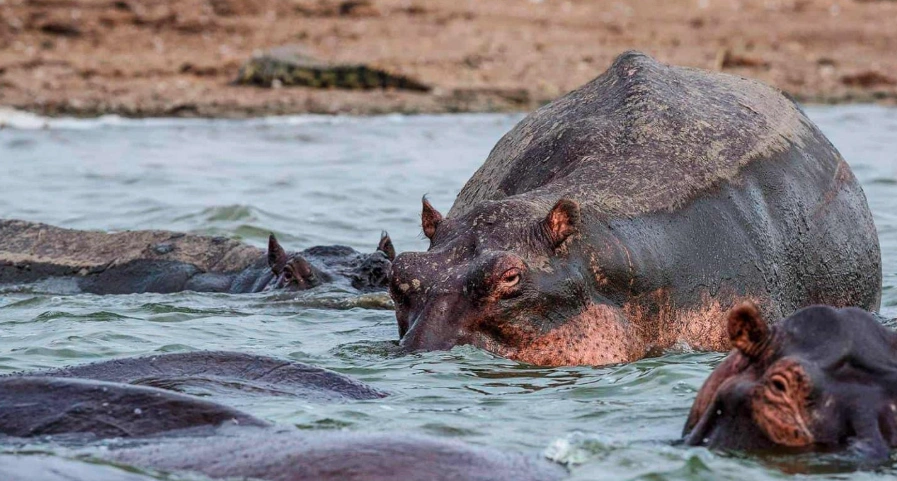
Hippos Matter to Uganda’s Ecosystems
Hippos shape their environments in quiet but crucial ways. Their nightly grazing fertilizes floodplains, supporting aquatic plants and fish populations.
Yet in some regions, their proximity to farmland creates tension, with crops trampled and fishermen at risk.
Conservation efforts in Uganda, supported by the Uganda Wildlife Authority and community initiatives, focus on balancing these realities.
Hippos remain abundant, but increasing human pressure on wetlands threatens their range. Supporting responsible travel in Uganda helps maintain that balance.
Best Times to See Hippos
Dry seasons (December to February, June to August) draw hippos into shrinking pools, making them easier to observe.
Early morning and late afternoon light also reveal more activity, with grunting, wallowing, and short bursts of social energy before they retreat to cooler depths.
If you’re planning a broader wildlife itinerary, our guide on the best time for safari in Uganda can help align your trip with other seasonal highlights.

Key Viewing Tips
- Always stay inside the boat or vehicle; hippos are highly aggressive if threatened.
- Keep noise low and avoid flash photography.
- Respect buffer zones near community fishing sites.
- Book guided experiences to ensure ethical, informed viewing.
FAQs
Are hippos dangerous to humans?
Yes, particularly when surprised or protecting calves. Their speed and aggression are often underestimated. Always maintain distance and follow guide instructions.
How many hippos are there in Uganda?
Estimates vary, but Uganda’s population likely exceeds 15,000, concentrated in protected areas like Murchison Falls and Queen Elizabeth.
Can I see hippos at night?
They graze mostly after dark, often leaving the water to feed. Night sightings are rare but possible on guided nocturnal drives in Lake Mburo or Queen Elizabeth.
What do hippos eat?
They are grazers, consuming short grasses along riverbanks. Despite their size, their diet is surprisingly limited and entirely vegetarian.
Are hippos endangered?
Globally, hippos are listed as Vulnerable by the IUCN, with threats including habitat loss and illegal hunting for ivory-like teeth.
Ready to plan a safari that includes Uganda’s most iconic waterways and wildlife?
Request a quote and our team will tailor an itinerary around your travel style and timing.

